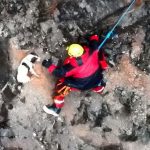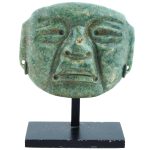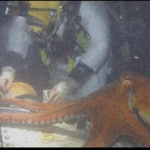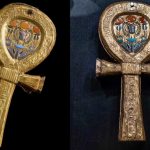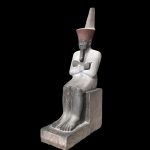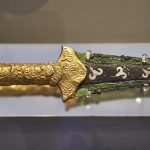The Highland Discs: Whispers from the Star People
- KimLoan
- September 25, 2025

Related Videos:
Long ago, nestled high in the remote highlands where the mountains kissed the sky, stood a village steeped in ancient tradition. Life was simple, bound by the rhythm of the seasons and the quiet majesty of the towering peaks. It was in this secluded realm that a secret, thousands of years old, was accidentally unearthed.

During a particularly deep excavation for a new water cistern, the villagers struck something hard and foreign, something that rang with an unnatural resonance. They began to pull them from the deep, dark soil: strange artifacts, perfectly preserved and unlike anything crafted by human hands. They were smooth, almost unnaturally round objects, resembling discs or flattened spheres. Engraved across their dark surfaces were swirling, unfamiliar symbols—geometric patterns that seemed to pulse with mathematical precision—and figures that looked neither man nor beast. They were clearly intelligent designs, but entirely alien.

The discovery sent a ripple of awe and apprehension through the community. The village Elders, the keepers of memory and lore, quickly gathered to examine the relics. They didn’t need scrolls or texts; the answer was locked in their deepest oral traditions. The Elders whispered that these were not mere relics of a past human civilization, but messages from the sky.

For generations, the legends had spoken of the “star people”—beings who descended from the heavens in glowing chariots during the dawn of human consciousness. These legends claimed the star people were benevolent guides, teaching early humans essential skills: the harnessing of fire for warmth and cooking, the art of cultivating crops from wild seeds, and, most crucially, the intricate patterns of the stars and the cyclical nature of time. The discs, the Elders declared, were proof of those visits.

What truly baffled the small handful of visiting scholars who later examined the finds were the actual carvings. They depicted incredible detail: vast spirals like galaxies, intricate diagrams of solar systems, and tiny, delicate figures with large, luminous eyes and slender limbs. Most startling of all were the vessels—carvings of flying saucers shaped uncannily like the aerial phenomena described in modern tales of the unexplained. How could a civilization thousands of years ago, confined to these isolated mountains, imagine and depict with such precision objects that would only be seen, feared, and discussed in the modern world?

The discovery posed a profound challenge to human history. Were these artifacts proof that humans were never truly alone? That we have always been watched, guided, and perhaps even visited by intelligences from beyond our world? For believers, the discs were the physical evidence for the “ancient astronaut” theory—a lockbox of knowledge left behind.

Others viewed the carvings with a growing sense of dread, claiming they were not instructional gifts, but powerful warnings. Warnings left behind for a future generation that would one day attain the technology to look to the stars and understand the complex cosmology etched into the stone. Perhaps they were a caution against repeating cosmic mistakes, or a stark reminder of the fragile place Earth holds in the immense, silent universe.

Today, these highland discs remain a potent and unsettling mystery locked in stone. They continue to echo the same haunting question through the ages, a question that connects the isolated villagers of the past with the astronomers and dreamers of the present: Who else is out there? The artifacts offer no definitive answer, only the compelling, circular forms of the discs themselves, silently waiting for the day when humanity can truly read the cosmic map they hold.

